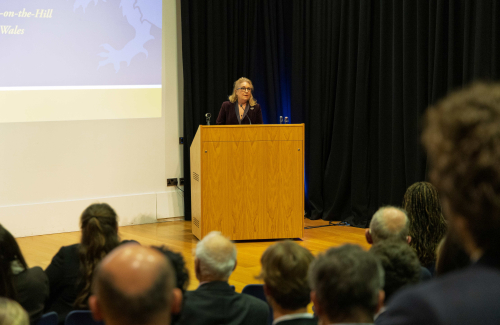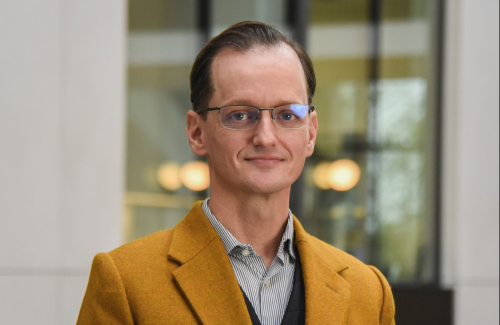More Pembroke news
The Dawn of Gravitational Wave Astronomy: Reflections on a Lecture by Prof. Alberto Vecchio
NEWS |
Will Fawcett, DPhil candidate in Particle Physics, reflects on Professor Alberto Vecchio's visit to Pembroke and his inspiring talk on Gravitational Wave Astronomy:
'Gravitational waves have been heralded as the scientific discovery of the century. Alberto Vecchio, Professor of Astrophysics at the University of Birmingham and part of the international research team that made the discovery, visited Pembroke College on 22nd February to explain how they were discovered and what it means for physics.
The gravitational waves that were recently detected originated from the merger of two black holes some 13 billion light years away from Earth. This cataclysmic event (on a truly astronomical scale) converted the mass of three Suns into pure gravitational energy a fraction of a second. The peak power output was around 50 times that of the entire universe.
In his lecture, Professor Vecchio first described the history of gravitational waves. In 1915, Albert Einstein published his theory of general relativity, which explains gravity as the warping of space and time. A year later, as a consequence of the theory, Einstein also predicted the existence of gravitational waves: ripples in the fabric of space-time.
As these ripples travel, they stretch space in one direction and compress it in the other (in a similar way to how sound travels). However, this effect weakens with distance until the wave fades to a whisper. Physicists long thought that these waves would never be measured on Earth.
Enter LIGO: the Laser Interferometer Gravitational-wave Observatory. The observatory is the most precise optimal instrument in the world. It consists of two arms, each 4km long, in an L shape with lasers shining down each arm in vacuum tubes that are reflected off mirrors of ultra-pure glass. If the beams are aligned correctly, they cancel out -- unless their separation is distorted.
The optical equipment is so precise it can measure the distortions of gravitational waves, which are roughly 10,000 times smaller than the size of a proton -- and there are two of these detectors, one in Louisiana and the other in Washington. On the 14th of September 2015, at 9:50:45 UTC, a signal consistent with gravitational waves was detected by both of these instruments.
This wasn’t only an observation of gravitational waves; it’s also the first direct observation of not only a black hole but also the first observation of a binary black hole system and their subsequent merger.
Becky Smethurst, DPhil student in Astrophysics commented: 'This discovery is huge for the field; one which I feel very privileged to be witness to. The detection of gravitational waves is this generation's splitting of the atom. To have Professor Vecchio explain the science premise so well and then speak so openly with members of the college about the discovery was truly an fantastic experience.'
Professor Vecchio concluded with the following reflections:
The detection of gravitational waves has opened a new kind of astronomy. For the first time we are able to hear the cosmos, as well as see it. Every time a new avenue of astronomical observation has been opened up, we have discovered weird and wonderful things -- who knows what the era of gravitational waves will bring?
On behalf of a very captivated audience, I would like to thank Professor Vecchio for his wonderful, inspiring talk.'

